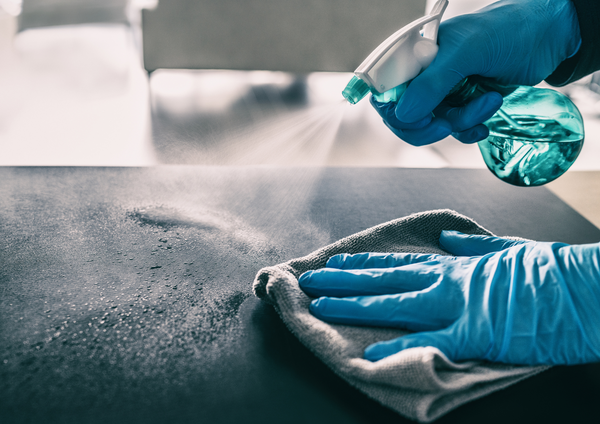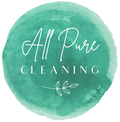Cleaning, Sanitising, and Disinfecting - What is the Difference?

Cleaning, Sanitising and Disinfecting are terms that used a lot in relation to the recent COVID-19 outbreak.
But what do they actually mean, what’s the difference between them and are they enough to deal with a virus like COVID-19?
Here’s a quick explanation of what is meant by cleaning, sanitising and disinfecting and what you can expect when you buy a product or order a service that claims to do one of these things.
Cleaning
Cleaning is the physical act of removing visible dirt from surfaces. Usually, a detergent-based product and a cloth is used to trap dirt and grime particles.
Cleaning will remove some bacteria and virus particles, but is not sufficient to guarantee the removal of pathogens.
We use microfibre cloths which trap 99.99% of germs and bacteria, which are then washed down the drain.
In your own home, cleaning will generally be sufficient to ensure a healthy environment. You don’t need to break out heavy chemicals for your day-to-day cleaning.
Remember, the presence of a small amount of bacteria is normal and not unhealthy.
When someone has been sick in your house, or if you’re preparing food, you may want to take extra steps such as sanitising or disinfecting surfaces. Cleaning to remove any physical dirt is a necessary precursor to both sanitising and disinfecting.
Sanitising
Sanitising means ‘to reduce bacteria and viruses to an acceptable level’, but not necessarily to completely eliminate them. This mainly applies to food contact surfaces and is a requirement for commercial food preparation surfaces.
Properly sanitising a surface prevents the contamination of food with bacteria, and cross-contamination of different foods.
Alone, sanitising is not sufficient to eliminate the presence of viruses such as the flu or COVID-19. To ensure the elimination of viruses, you need to disinfect.
Disinfecting
Disinfecting is the process of killing all organic matter on a surface. This is the only way to guarantee the removal of viruses and other contagions from the environment. To disinfect a surface usually requires bleach or a strong alcohol solution. These will effectively kill microbial life forms and viruses.
For viruses such as the flu and COVID-19, the World Health Organisation recommends a solution between 65% to 90% alcohol. Lower than 65% may be too weak to be effective, and higher than 90% may evaporate before it has a chance to act.
If you haven’t properly cleaned a surface before disinfecting, organic matter particles may neutralise the disinfectant you use.
If someone has been sick in your house, disinfect high contact areas frequently. For example door handles, light switches and counter tops are a likely source of germ transmission as they get touched a lot.
For more information about disinfecting protocol check this link from the Department of Health.
Here at All Pure Cleaning, we provide thorough cleaning + disinfecting services tailored to the current pandemic of Covid-19. Get in touch to find out more about what we can do to help keep you, your family or your workplace safe.

Leave a comment